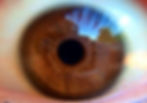
BLEPHARITIS
Blepharitis is inflammation of the eyelid margins. It can make your eyelids red and eyelashes crusty, and make your eyes feel itchy and gritty. Blepharitis is a common cause of dry eye symptoms. Blepharitis is generally divided into two categories depending on which part of the eyelid is affected.
Anterior Blepharitis affects the outside part of the eyelid margin, near the eyelashes. The lid margin often looks ‘crusty’, similar to dandruff, and the eyelids can look red, and sometimes slightly swollen. The main causes of anterior blepharitis are believed to be bacterial infection (staphylococcal), seborrhoeic (linked to seborrhoeic dermatitis) and demodex infestation.
Posterior Blepharitis, also known as meibomian gland dysfunction affects the inside rim of the eyelids, past the eyelashes. The meibomian glands are small glands located within the eyelids, and produce an oily secretion which is an important component of the tears. In posterior blepharitis, the pores of the glands become blocked, causing an obstruction to the flow of the oily secretions. This leads to the tears evaporating rapidly and causing dry eye symptoms.
BLEPHARITIS TREATMENT
WARM COMPRESSES
Applying a warm compress to the eyelids helps loosen the crusts formed on the lashes, and also softens the secretions in the blocked Meibomian glands to help unblock them. This can be done with a clean flannel, but there are various microwaveable eye bags which are convenient and easy to use. Contact us for more advice.
CLEANING YOUR LIDS
After applying warm compresses to soften the crust formed on the eyelashes, it is important to clean the lid margins. Although this could be done with a clean flannel, using sterile lid wipes is a safer and more effective method. We stock Blephasol® range of lid hygiene products. This should initially be done twice daily and can be reduced to once a day as the symptoms improve.
Although not a serious condition, blepharitis is often chronic, meaning that it does not go away easily and can recur. Some people find that the above treatments carried out at home are not sufficient and they need more intensive treatment. We are in the process of setting up specialist Dry Eye Clinics. Managing underlying blepharitis is an important part of managing dry eye symptoms, please contact us for more information on our Dry Eye Clinics.
You can get more information on blepharitis at the following links:
www.lookafteryoureyes.org/eye-conditions/blepharitis/
www.nhs.uk/conditions/blepharitis/


